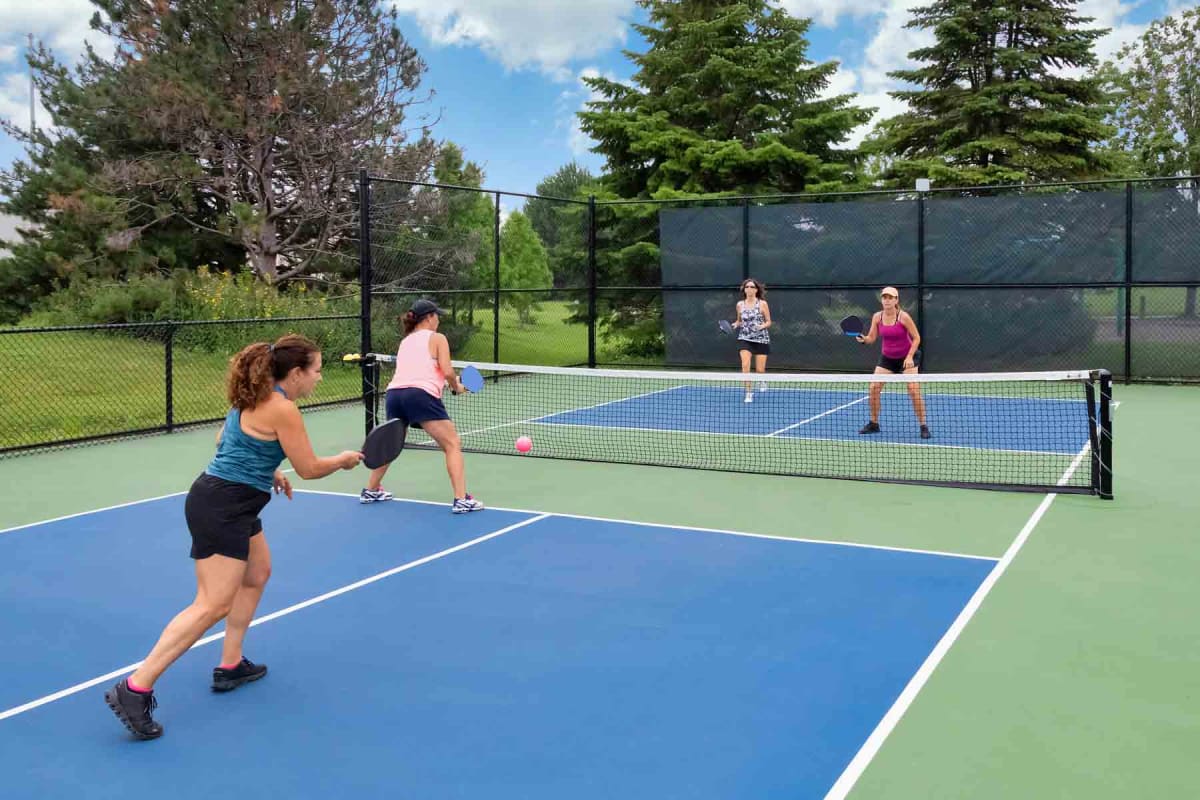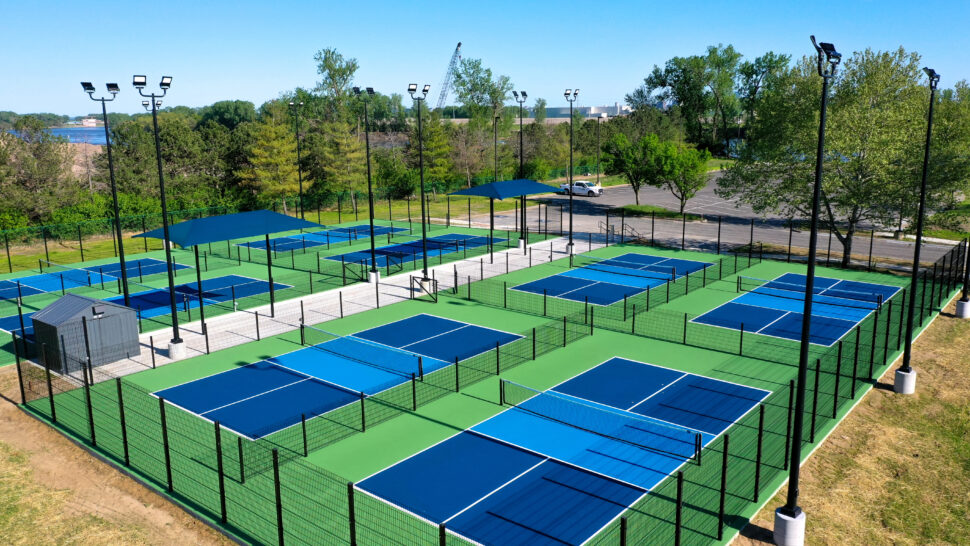Essential Actions for Effective Pickleball Court Construction in Your Community
Increase Local Interaction With Community-Driven Pickleball Court Projects
The development of community-driven pickleball court jobs offers an unique opportunity to promote regional involvement and enhance area connections. The actual question remains: how can these grassroots efforts be tactically carried out to make certain sustainability and inclusivity in varied areas?
Importance of Community Engagement
Community engagement is a vital aspect in the effective advancement of pickleball court jobs, as it promotes a sense of ownership and collective responsibility among residents. When community members are proactively associated with the preparation and application stages, they are most likely to advocate for the task's lasting success. Involving stakeholders such as regional players, families, and recreational teams makes sure that the centers satisfy the diverse demands and choices of the neighborhood.
Furthermore, community involvement grows a helpful environment where homeowners really feel equipped to add their concepts and resources. Pickleball court construction. This collaborative approach can bring about cutting-edge services that boost the layout and functionality of the courts, making them a lot more appealing to a bigger target market. In addition, entailing locals in decision-making procedures can enhance social ties, advertising inclusivity and unity within the neighborhood
The presence of neighborhood support for a pickleball task can also play a crucial function in securing financing and approval from regional authorities. By showing a shared dedication to recreational growth, neighborhoods can properly promote for sources and policy modifications that favor the establishment of pickleball courts, inevitably enhancing the neighborhood culture and leisure landscape.
Actions to Start a Task
Initiating a pickleball court job calls for a methodical strategy that improves the structure of area engagement developed in previous conversations. The initial step is to construct a task committee comprising regional stakeholders, fanatics, and agents from relevant companies. This diverse group makes certain that multiple point of views are taken into consideration.
Next, carry out a requirements analysis within the area. Surveys, focus groups, and public conferences can be reliable in gauging interest and event input on prospective court areas, wanted amenities, and scheduling preferences. Following this, establish a job strategy detailing responsibilities, timelines, and objectives.
When the plan remains in location, engage with neighborhood authorities to comprehend zoning policies and any type of required licenses. Interacting transparently with the neighborhood throughout this process is important, as it fosters trust and encourages further engagement.
In addition, arranging neighborhood events can help maintain energy and excitement. These occasions can work as platforms for further conversation and aid to enhance neighborhood ties. Record every step taken and maintain thorough documents, as this will be helpful for future phases of the project, consisting of funding and source purchase.
Funding and Resources Available
Safeguarding funding and sources for a pickleball court job is frequently a vital step that can establish the job's usefulness and success. Different avenues exist for getting financial backing, ranging from public financing to private sponsorships. City government gives, typically targeted at advertising community health and wellness and recreation, can give substantial economic backing for such campaigns.
Along with federal government sources, nonprofit organizations and structures frequently offer grants particularly for sports and neighborhood advancement jobs. Involving regional services as sponsors can also be a worthwhile strategy; several business aspire to buy community efforts that improve their business social responsibility profile.
Crowdfunding platforms have emerged as a feasible alternative for grassroots fundraising, enabling community members to contribute directly to the project. This method not only increases funds however additionally cultivates a feeling of possession amongst individuals.
Layout and Preparation Factors To Consider
Reliable layout and preparation are basic elements of any successful pickleball court project following the acquisition of financing and sources. A thorough assessment of the proposed area is essential; this consists of assessing access, closeness to existing area features, and the capacity for visibility and engagement.
The format of the court have to abide by official size requirements while taking into consideration the bordering atmosphere. Incorporating attributes such as seats, shade frameworks, and ideal illumination can considerably enhance gamer experience and spectator enjoyment. Products chosen for the court surface need to focus on resilience and security, with options like acrylic or asphalt offering optimum efficiency.
Involving area members in the style process cultivates a sense of ownership and makes certain that the facility fulfills regional needs - Pickleball court construction. This can be attained through public appointments and surveys, permitting stakeholders to reveal their choices and worries
Sustainability should additionally be a priority; including environment-friendly materials and methods can add to long-lasting stability. Creating an upkeep strategy to ensure the court stays in superb condition will certainly sustain ongoing community engagement and participation in pickleball tasks.

Success Stories and Study
Highlighting the transformative effect of community-driven initiatives, numerous success stories illustrate just how collaborative initiatives have resulted in the growth visit site of dynamic pickleball courts throughout different regions. One remarkable instance is the initiative in a town in Florida, where homeowners banded with each other to convert an underutilized tennis court right into a specialized pickleball facility. With fundraising events and collaborations with local services, look at here now the community increased sufficient funds to set up brand-new internet, resurfacing, and lines, inevitably promoting a dynamic hub for local gamers.
In a similar way, in a rural location of California, a grassroots motion emerged to produce pickleball courts in a neighborhood park. The job not just involved volunteers for building yet also consisted of workshops to involve community members in the sporting activity. Consequently, the courts ended up being a prime focus for social interaction and physical fitness, attracting players of any ages.
These instance studies exemplify exactly how community-driven tasks can enhance local interaction, advertise exercise, and strengthen social bonds. By leveraging collective sources and excitement, areas can successfully produce and maintain pickleball facilities that serve diverse populaces and cultivate a feeling of belonging.

Conclusion
Finally, community-driven pickleball court jobs act as crucial instruments for improving local involvement and fostering a feeling of belonging among citizens. By prioritizing stakeholder participation throughout the planning and execution phases, these efforts can efficiently resolve diverse neighborhood needs. Furthermore, leveraging readily available resources and checking out successful situation researches can offer beneficial insights for future jobs. Inevitably, such efforts add to the makeover of public spaces into vibrant centers of physical fitness and social interaction, reinforcing area ties.
The appearance of community-driven pickleball court projects offers an unique chance to promote regional involvement and reinforce area connections.Area engagement is a vital component in the effective growth of pickleball court tasks, as it cultivates a feeling of possession and cumulative obligation among citizens. When neighborhood members are blog here actively included in the planning and application stages, they are much more likely to advocate for the project's long-term success.Launching a pickleball court task calls for an organized technique that develops on the foundation of community engagement developed in previous conversations. The job not only involved volunteers for construction but additionally consisted of workshops to engage community participants in the sporting activity.